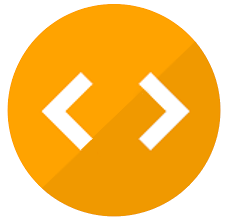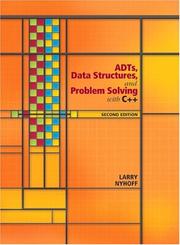Check nearby libraries
Buy this book

"Designed for CS2 courses, this book thoroughly covers ADTs (Abstract Data Types), data structures, and their use in problem solving. The text guides the student through the development of ADTs such as stacks, queues, and binary trees, the use of key data structures such as arrays, classes, and linked lists to implement ADTs, and problem solving using Object-Oriented Design (OOD) methodologies. Algorithms required to design and implement ADTs in C++ are given through treatment along with a solid introduction to the Standard Template Library (STL). C++ topics such as recursion, inheritance, and polymorphism are introduced and some C-style topics relative to data structures and also provided. Using examples, case studies and exercises from various areas of computer science, author Larry Nyhoff offers the student a solid foundation for further studies in CS while providing concrete tools for unlocking the power of C++."--BOOK JACKET.
Check nearby libraries
Buy this book

Previews available in: English
| Edition | Availability |
|---|---|
|
1
ADTs, data structures, and problem solving with C++
2005, Pearson/Prentice Hall
Hardcover
in English
- 2nd ed.
0131409093 9780131409095
|
aaaa
|
Book Details
Table of Contents
Edition Notes
Rev. ed. of: C++: an introduction to data structures. 1999.
"An Alan R. Apt book."
Includes index.
Classifications
The Physical Object
Edition Identifiers
Work Identifiers
Community Reviews (0)
History
- Created April 1, 2008
- 16 revisions
Wikipedia citation
×CloseCopy and paste this code into your Wikipedia page. Need help?
| September 22, 2025 | Edited by Drini | Add TOC from Tocky |
| August 11, 2024 | Edited by MARC Bot | import existing book |
| December 19, 2023 | Edited by ImportBot | import existing book |
| December 7, 2022 | Edited by ImportBot | import existing book |
| April 1, 2008 | Created by an anonymous user | Imported from Scriblio MARC record |









